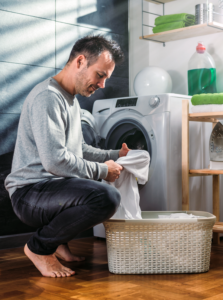The COVID-19 (C19) pandemic is the most crucial global health calamity of this century and the greatest challenge that mankind has faced since the 2nd World War. It has rapidly spread around the world posing enormous health, social and economic challenges to the entire human population. Almost all nations are struggling to slow down the transmission of the disease. Testing & treating patients, quarantining suspected persons, partial or complete close-down of the industries, restricting large gatherings, maintaining complete or partial lockdowns throughout the world has had a serious impact on all global economies.

Ten months into the C19 pandemic, around 10% of the total global population of 7.8 billion has been infected by the virus, according to the World Health Organization (WHO). But since life has to go on, most of the countries have lifted various embargoes and have opened up most of the commercial activities to sustain their economies. During these trying times, it is important that the workers in various industries take good care of themselves and their FRC/ARC to safeguard their health.
This blog highlights the Do’s-and-Don’ts for disinfecting your FRC / ARC after a day in the field or in case of accidental contact with the C19 virus. It is very important to be absolutely certain that the information you receive regarding the care of your FRC / ARC is correct.
We know that the C19 virus can stay alive on porous surfaces (such as clothing) for hours and upto several days on non-porous surfaces such as plastic and stainless steel. C19 virus deposited on different surfaces can eventually be killed by washing and drying out.
Disinfecting FRC – Do’s:
- The standard home laundering process you have been following for years, with soap and water, is more than sufficient to destroy the C19 virus and disinfect your clothing.
- We all know that washing your hands with soap and water for at least 20 seconds is a highly effective way to disinfect them. This holds true even for your safety garments.
- Detergent and water will disinfect clothing in the same way hand washing does for humans. Just stick to the basics – Launder with Water (at suggested temperatures) + Use soap (laundry detergents) + Thoroughly dry your clothing
- Standard home washing machine procedures involve both more aggressive soap (detergent) and much longer wash times than hand washing and are therefore an extremely effective C19 disinfection method for clothing.
- Standard drying machines are also likely to accelerate the decomposition of virus relative to the natural drying out process due to the heat that they generate.
- Check with your FRC/ARC manufacturer prior to any deviation that you may wish to undertake against their care instructions.
Disinfecting FRC – Don’ts:
- Do not use additives while washing FRC / ARC
- Do not apply chlorine bleach or other chemical disinfectants to your FRC/ARC, as this may compromise the safety of your garment.
- Do not add ultra-germicidal products like hydrogen peroxide, borax solution, vinegar, etc to the wash cycles
- Do not apply washing and drying temperatures in excess of what has been suggested on your FRC label. Excessive temperatures can damage or compromise FR/AR properties and even lead to your garments becoming harsh and weaker causing frequent break-opens
Safety during C19: Do not share your FRC and PPE
Don’t share your FR/AR clothing – sounds like a given?
However, as the current health crisis continues to unfold, we want to be sure that we are reminding the users why NOT sharing clothing is more important than ever.
As we have explained above that the virus can remain alive on our clothes for hours. C19 can spread by respiratory droplets – when an infected person sneezes or coughs, the droplets are transmitted to surfaces and fabrics where they can potentially stay alive for a number of hours. Therefore, any healthy person touching these surfaces, sharing the infected clothing, gloves, towels or other fabrics can lead to spread of C19 and other infectious diseases.
There are 3 ways by which the germs can be transmitted by clothing or textile material:
- When infected clothing and textile material is shared or is used by more than 1 person
- When someone handles dirty laundry of an infected person, they can spread germs onto their hands thereby infecting themselves and other items that they touch
- When a contagious person handles someone else’s clothing after it is cleaned but before they wear it.
Therefore, the safest approach is to be careful of all surfaces, wash your hands often and keep your clothing to yourself. It is impossible to know where the virus is active – therefore taking extra precautions at home and at work will help to overcome this pandemic.
Tarasafe wishes you all the very best. Stay Clean. Stay Safe. We will see it through.


Exceptional read, Positive site, where diyou u come up with all the info on this posting?
I’ve read a few of the posts on your website now, and I really like your
style.
Best regards,
Abildgaard Raahauge